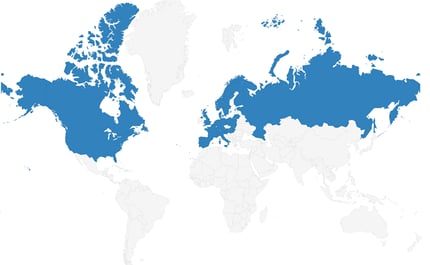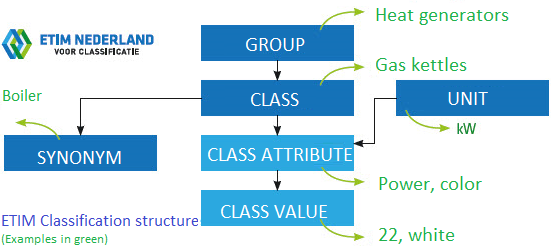Earlier, we wrote about how publishing to ETIM has been made easy with SRC-PIM. But that’s not all there is to know about ETIM. We present to you: 10 things you probably didn’t know about ETIM.
1.The ETIM acronym
Okay, this one is a give-away: ETIM is an acronym. Originally when ETIM was found, the letters stood for the Electro-Technical Information Model. Later, this was changed to the European Technical Information Model. ETIM originated as a Dutch initiative back in 1991 and was first set up as a general information model to support installation companies setting up their digital business processes. Already back then, there was a clear need for uniform communication. It wouldn’t take long before ETIM was all about product classification for technical products.
2. The History
Throughout, the ETIM project grew and peaked national and international interest. Wholesalers jumped on the bandwagon and by 2006 also suppliers got on board. In 1998 the heating, ventilation, and air conditioning sector and the sanitary sector joined ETIM, followed by the shipbuilding sector in 2009, the general building sector in 2014, and tools in 2019 by the integration with proficlass.
On top of that, ETIM is also working on joint projects with standards like buildingSMART Data Dictionary.
3. Global reach
ETIM International has its official seat in Brussels, Belgium. Internationally, the first expansion came with ETIM Germany in 1999. Since then, ETIM international has spread its wings across Europe and North-America with 21 member country organizations involved. ETIM is governed by the ETIM International organization and every member has a say in it.
 ETIM’s worldwide footprint
ETIM’s worldwide footprint
4. Scope
ETIM didn’t confine itself to just being a classification model for the suppliers, wholesalers, and manufacturers. Instead, with ETIM MC (Modelling Classes), the organization is extending its footprint to also providing a model for manufacturers to provide the relevant geometrical product information for installers to construct their BIM (Building Information Modeling) projects.
5. A classification model
Now, enough with the facts & figures. What is ETIM exactly? ETIM is a classification model that enables technical products to be categorized in classes of similar products and described in detail using standardized features and values. It’s a logical way of classifying products in different classes. That means that every class has its own clearly defined product properties. ETIM is no PIM system, no catalog, no product database, no CAD-system, and no search machine. But all these applications use ETIM as a base. What you can, for example, use ETIM for is to find products to easily build your BIM, to print out catalogs, or manage your supplies or offering.
6. The hierarchy
So, how would an ETIM classification look like in practice? In this example, the class is called ‘boiler’ and the property could be for example the color or the power of that boiler. The property-value could be then for example white, or value in watts. In the case of alphanumeric properties, the property values are also standardized and can be used from pull-downs. Therefore avoiding mistakes on how to write “Sendzimir galvanized steel”, for example.
Each class has synonyms too, e.g. when you’re using a local term for a product instead of the formal name of the class, chances are high you will still find it by just typing in the term you know best.

7. Neutrality
What else is there to know about ETIM? Well, for instance, ETIM is medium neutral. That means all the classified data can be used for all kinds of applications. It’s also a manufacturer neutral classification. Manufacturers’ private color descriptions like “Alpine-white” are not allowed. It has to be a neutral RAL-code. That means that no big corporation owns the model and can change it as they please.
8. Advantages of industry uniformity
So ETIM is a product classification model. What are the advantages of having such a classification model? Well, for starters, your data quality will improve and with it the whole supply chain will profit, including your own business. Because good product information and with it data quality will lead to preventing doing double work, preventing errors because of manual entry, more efficient communications between parties and less incorrect orders, and wasted resources as a result of it.
9. How is ETIM developed?
ETIM is developed in close cooperation with the market and its users which means you as a user can also contribute to ETIM. New classes suggested from different classification groups don’t have to wait for the next Major ETIM-version. They can be released into the dynamic ETIM after approval by ETIM. This means that if you think something’s missing, you are free to suggest additions to the data model.
10. ETIM and SRC-PIM
ETIM has recently been added to SRC-PIM! So if you’re a product manufacturer and you want to:
- Have all your product information in one organized location and always up-to-date to the industries’ latest standard
- Have your product information published to the Dutch and Belgian market through our 2BA or Installdata PIM-plug-in
- Maximize your order intake while also minimizing product returns

Screenshot of installation catalogue in SRC-PIM with DAM module
SRC-PIM offers hardware suppliers not only the ETIM data model but also access to the GS1 DIY portal. This means you’re able to access both from one location. We keep the ETIM data model always up-to-date so you’re always sure to publish correctly to 2BA with ETIM.
Let’s schedule a demo or contact us for more information at info@src.nl or give us a call on +31 (0)229 233 154.